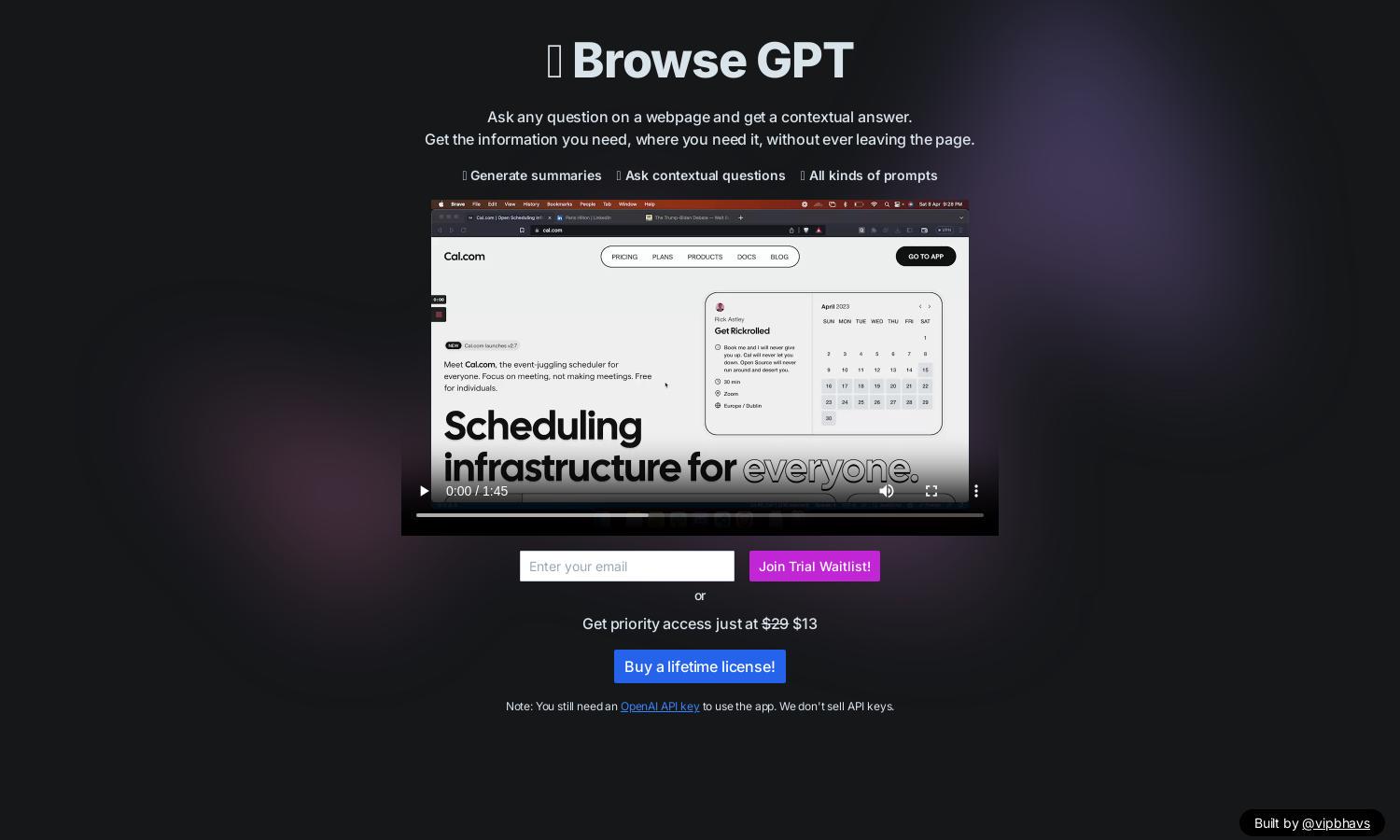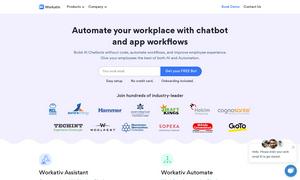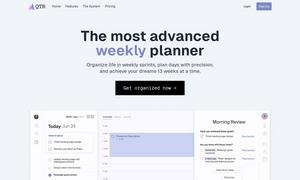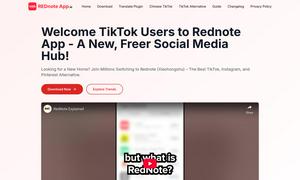Browse GPT

About Browse GPT
Browse GPT is an innovative web application that allows users to ask questions on any webpage, receiving contextual answers directly. Its standout feature enables seamless information access without page refreshes, benefiting students, researchers, and anyone seeking quick, relevant responses on the fly.
At Browse GPT, users can choose between affordable pricing plans, such as a trial waitlist or priority access for $29, discounted to $13. Additionally, a lifetime license is available. Each tier provides unique value, enhancing user experience and ensuring easy access to contextual answers.
The user interface of Browse GPT is intuitively designed, ensuring a seamless browsing experience. With a streamlined layout, users can easily navigate features and access contextual answers, making information retrieval smooth and enjoyable. This user-centric design sets Browse GPT apart in functionality and ease of use.
How Browse GPT works
Users begin by signing up on Browse GPT, where they receive a personalized experience. Upon landing on their desired webpage, they can ask questions related to the content. Browse GPT quickly processes the query, utilizing AI to deliver contextual answers, making information retrieval straightforward and satisfying.
Key Features for Browse GPT
Contextual Answers
Browse GPT's core feature is its ability to provide contextual answers directly on any webpage. This unique functionality allows users to seamlessly engage with web content without distractions, enhancing their browsing experience while ensuring they receive relevant information in real-time.
Summarization Feature
Another impressive feature of Browse GPT is its summarization capability, which allows users to generate concise summaries of lengthy articles or documents. This not only saves time but also ensures that users grasp essential points quickly, enhancing overall understanding and efficiency.
Prompt Variety
Browse GPT boasts a diverse range of prompt options, empowering users to ask various types of questions. This flexibility not only caters to different information needs but also enhances user engagement, making it easier for individuals to explore topics that interest them.
You may also like:








